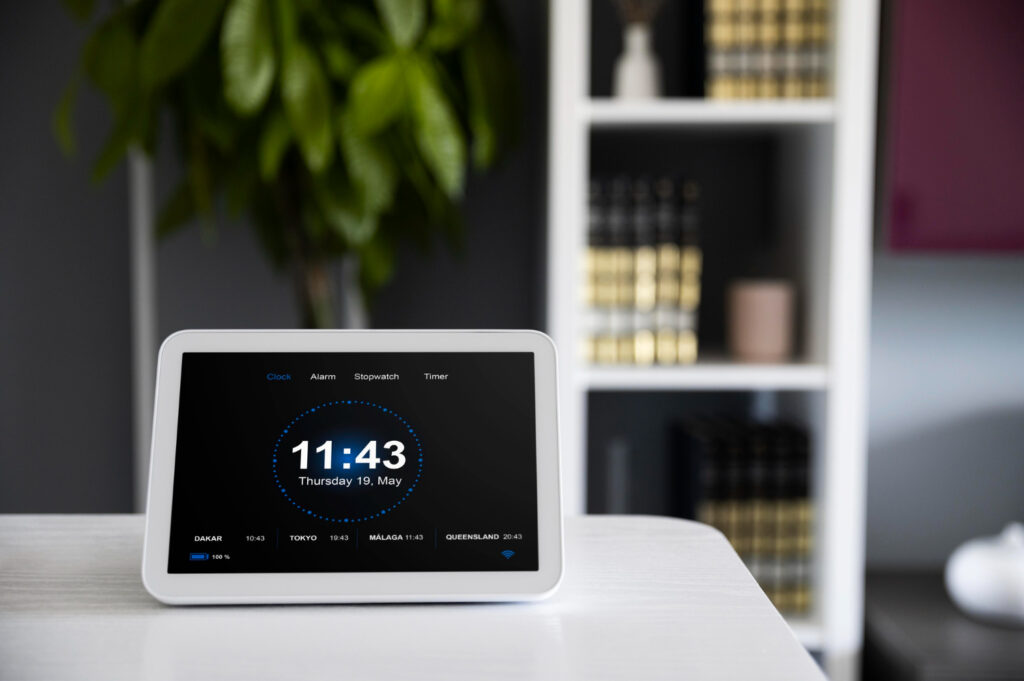AI Home Automation: Smarter Living in 2025
Introduction
Technology is no longer just reactive—it’s becoming proactive. In 2025, AI Home Automation is shaping the way we interact with our living spaces. Unlike traditional smart devices that only follow commands, AI-driven systems can now anticipate your needs, adapt to your routines, and even think ahead to improve safety, comfort, and energy efficiency. This shift is redefining the concept of a smart home into a truly intelligent one.
Table of Contents
What Is AI Home Automation?
AI Home Automation refers to the use of artificial intelligence to manage and optimize smart home devices. While standard automation allows you to schedule tasks (like turning lights on at 7 PM), AI goes further by:
- Learning from user behavior
- Predicting needs before you ask
- Adapting to environmental changes in real time
- Enhancing efficiency and security without constant input
The result is a home that doesn’t just respond to you but thinks ahead.
Why 2025 Is a Turning Point for AI Home Automation
Several technological advancements are fueling the rapid growth of AI-powered homes in 2025:
- Stronger AI algorithms capable of advanced predictive analytics.
- Integration with IoT devices for seamless communication.
- Improved edge computing, reducing reliance on external servers and enhancing privacy.
- Eco-conscious design, where AI systems focus on sustainable energy use.
This year marks a transition from experimental smart gadgets to fully connected intelligent ecosystems.
Key Benefits of AI Home Automation
1. Predictive Energy Management
AI systems can monitor your daily energy consumption and adjust usage to lower bills without sacrificing comfort. For example, smart thermostats in 2025 not only learn your preferred temperatures but also predict weather changes to pre-heat or cool your home efficiently.
2. Enhanced Security with AI Monitoring
Unlike standard cameras, AI-powered security systems can distinguish between a family member, a pet, or a potential intruder. Predictive algorithms alert you to unusual activity before it becomes a threat.
3. Personalized Living Experiences
From lighting to entertainment, AI Home Automation tailors every aspect of your environment. Imagine your living room lights dimming, blinds closing, and your favorite playlist starting—all without a single voice command.
4. Improved Accessibility
AI-driven homes assist the elderly and people with disabilities by anticipating needs such as adjusting lighting, reminding about medication, or detecting unusual health patterns.
5. Seamless Integration Across Devices
In 2025, AI hubs unify multiple brands and platforms into one ecosystem. No more juggling between apps—your home operates as a cohesive, intelligent unit.
AI Home Automation in Action: Everyday Scenarios
Morning Routine
Your AI assistant notices your wake-up time shifting earlier due to work demands. Instead of waiting for you to adjust settings, it gradually brightens your lights, brews your coffee, and prepares a warm shower in advance.
Energy Efficiency
On hot summer days, AI predicts peak electricity rates and pre-cools your home during low-demand hours. This not only keeps your space comfortable but also saves on utility bills.
Safety Alerts
If your child leaves the house at unusual hours, the system sends an instant alert. AI facial recognition ensures you know exactly who entered or exited.
Health Monitoring
Smart wearables synced with your AI system detect irregular sleep patterns or increased stress levels. The home then adjusts lighting and temperature to promote better rest.
Challenges and Concerns of AI Home Automation
While the potential is exciting, there are still challenges to address:
- Privacy Risks: With more data collected, homeowners must ensure devices comply with strong privacy standards.
- Cost of Implementation: Advanced AI systems are still more expensive than traditional automation.
- Compatibility Issues: Some older devices may not integrate seamlessly with new AI ecosystems.
- Over-Reliance on AI: While convenient, homes must always allow manual control in case of system errors.
For balanced adoption, companies and users must focus on privacy, transparency, and control.
Best Practices for Setting Up AI Home Automation
- Choose Devices with Edge AI
Opt for products that process data locally to reduce security risks. - Regularly Update Software
AI systems rely on updates for better performance and security patches. - Segment Your Network
Use a dedicated Wi-Fi network for your smart devices to protect personal data. - Review Privacy Policies
Before purchasing, check how manufacturers handle data collection and storage. - Start Small and Scale Up
Begin with essential devices like thermostats or cameras, then expand into full automation.
The Future of AI Home Automation Beyond 2025
Experts predict that AI will continue to evolve into hyper-personalized smart living environments. Upcoming trends include:
- Emotion recognition systems that adjust lighting, music, and temperature based on mood.
- Zero-energy smart homes where AI manages energy so efficiently that homes generate as much power as they consume.
- Autonomous home maintenance where AI detects appliance issues and arranges repairs automatically.
You can follow ongoing advancements at MIT’s AI + IoT research for deeper insights into future possibilities.
Conclusion
In 2025, AI Home Automation isn’t just about convenience—it’s about proactive intelligence. From energy savings to enhanced security and personalized comfort, AI-driven systems make life smoother and more efficient. As adoption grows, the challenge will be balancing convenience with privacy and affordability.
If you’re ready to explore innovative smart gadgets that integrate seamlessly with AI-driven living, check out our Smart Home Gadgets collection for the latest solutions.


